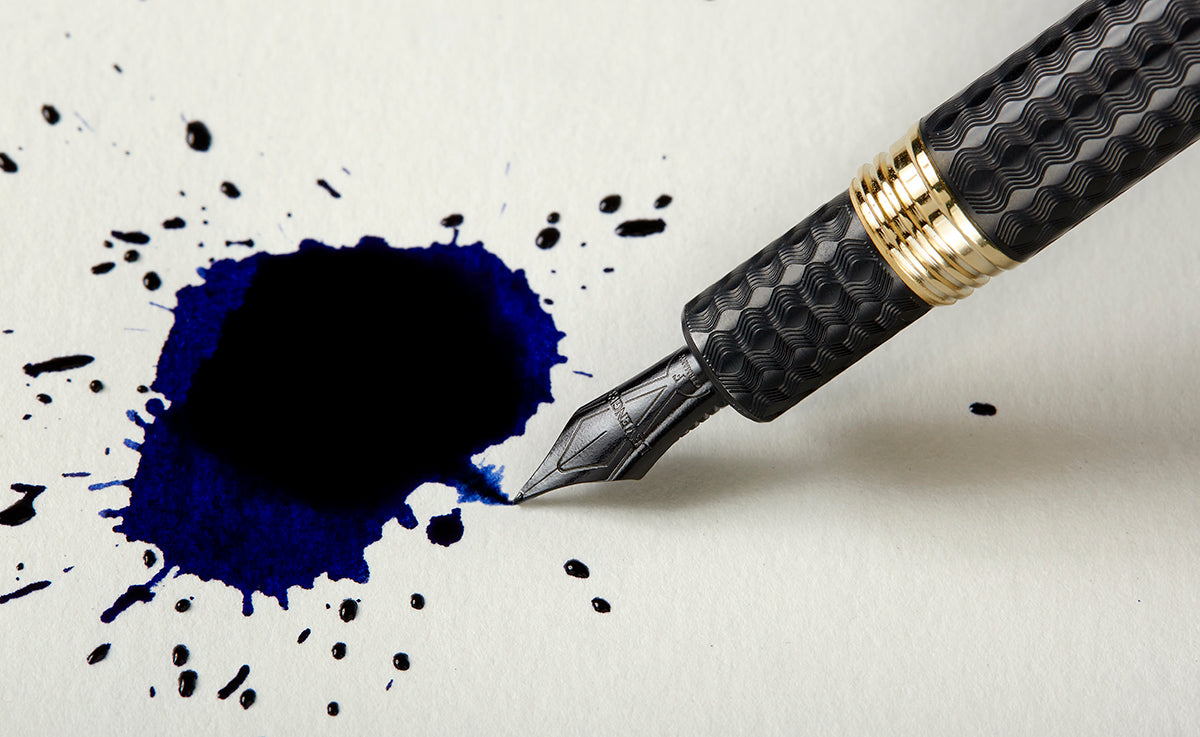In case you didn’t get that memo that came out in 1954, fountain pens are obsolete. I know, I love them too. They are just so pleasing—the way they write with real, liquid ink, and give you that distinctive broad downstroke and thin horizontal stroke. That’s what writing by hand is all about.
But remember that fountain pens were designed decades before people were fool enough to go up in airplanes. If you carry one aloft, you’re messing with a technological Jurassic Park. But since I know some of my fellow travelers do just that, I offer four simple rules for flying with your fountain pen:
Rule No. 1: Don’t.
Rule No. 2: Since I suspect you’ll ignore Rule 1, then at least fill it up all the way—or better yet, drain it completely. Half measures are asking for inky fingers and a dry cleaning bill.
Rule No. 3: If you’re still ignoring Rule 1 and have elected the “fill it up all the way” route in Rule 2, for your safety and the safety of those around you, don’t use your pen on the plane. It won’t kill you to use a ballpoint for a few hours. Then once you’ve landed, head to the nearest restroom.
Rule No. 4: Once safely inside the restroom, open your treasured fountain pen over a sink. Don’t be fooled by seeing no ink on the pen—it’s just hiding. Rinse out the cap (and thank me when you see inky water come out). Rinse the nib and the rest of the pen, too. Dry with paper towels, making sure not to get paper fragments stuck in the nib.
The potato chip factor
When you go up in an airplane, the cabin is pressurized, but not all the way to sea level. When you reach your cruising altitude of, typically, 35,000 feet, the air inside the cabin will be at the equivalent of about 7,000 to 8,000 feet.* This is like driving over a moderately high pass in the mountains. Did you ever notice potato chip bags puffing up as you do? That’s because they were sealed at sea level; once surrounded by the thinner air in the mountains, the relatively compressed air inside the bag of chips wants out.
Which is just what the air inside your fountain pen wants. And if there’s ink in the way, that ink is coming out first—ready or not. Filling your pen as full as you can will minimize the air that can expand, but even a little air can cause your pen to become a squirt gun.
Keeping ink in the pen—then and now
In their defense, fountain pens used to be high tech themselves. Back when Thomas Edison was etching sound into wax and Gustave Eiffel was erecting an iron tower over Paris, other inventors were reinventing the way humans put words on paper. After many an inky failure, they accomplished the age-old dream of literate humans worldwide—to have a pen with its own onboard ink supply. Finally, humans would be liberated from that pesky ink pot we previously had to carry with us like an unwelcome little brother. Instead of dipping our plumes or steel nibs every line or two, ink flowed—as if from a fountain—right out the tip of our pen. Amazing.
Even if you lived in the Alps, a fountain pen would work because the air up high was thin all the time. It was the rapid change in air pressure that airplanes visited upon us that revealed the Achilles heel of the fountain pen.
Not to be left on the tarmac, the pen industry came out with the ballpoint. The ballpoint and the modern jet airliner both graduated from college shortly after World War II and started working together. The paste ink of the ballpoint, with some grease behind it, slides down its tube as you write, impervious to altitude changes. It was now safe to move about the cabin and write postcards to Mom. Newer rollerballs and gel ink ball pens behave basically the same, just using different ink formulations.
Touchdown
Now you know the facts. When you ignore Rule 1, Rules 2-4 will let you travel with your land-loving, gloriously antiquated fountain pen and avoid fuel spills. Then you can enjoy miles of real writing pleasure...when you have arrived.
—————-
*My thanks to Captain Wayne J. Welch, Retired, of American Airlines, who explained pressure change inside airplanes. To pressurize cabins all the way to sea level would require having heavier fuselages, reducing payloads, and adding cost. Most passengers can put up with the equivalent of 7,000 to 8,000 feet for most flight times.








